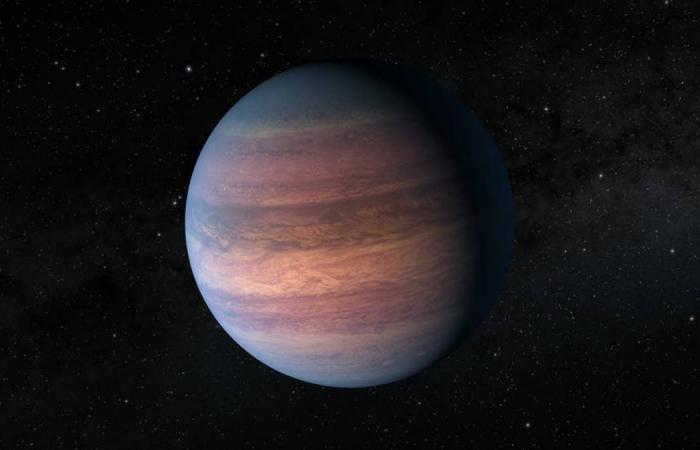The massive world, called TOI-2180 b, is 379 light-years away and takes 261 days to orbit its star — longer than many other gas giants outside our solar system — and a temperature of about 76 degrees Celsius. , but abnormally cold for similar exoplanets.
TOI-2180 b is also thought to be much denser than Jupiter, with up to 105 Earth masses crammed inside. This indicates that it does not consist of elements such as hydrogen and helium.
There may also be rings and moons orbiting around it, something that has not yet been found with certainty outside our solar system.
Citizens, who are using data from NASA’s telescope to discover other worlds, have teamed up with professional astronomers in a “global unity effort”. While professional astronomers use algorithms to analyze the data, citizen scientists examine it with the naked eye using a program called LcTools.
This prompted former US Navy officer Tom Jacobs to note a plot showing starlight from the TOI-2180 star dimming by less than half a percent over a 24-hour period. While that may not sound like much, the data does suggest that a planet orbiting it may be responsible for the dimming.
By measuring the amount of light that diminishes as the planet passes through, scientists can estimate the planet’s size, and, in addition to other measurements, its density. But transits can only be seen if the star and its planet are in line with the telescopes you’re looking at.
“With this new discovery, … we are pushing the boundaries of the types of planets we can extract from TESS [Nasa’s Transiting Exoplanet Survey Satellite] Diana Dragomir, associate professor at the University of New Mexico said. “TESS was not specifically designed to find such long-orbiting exoplanets, but our team, with the help of citizen scientists, is searching for this rare gem nonetheless.”
The manual effort of citizen scientists, in some cases, outperforms the work of algorithms in discovering new planets.
“It’s really hard to write code that can walk through a million light curves and reliably identify single transit events,” said Paul Dalba of the University of California, Riverside. A single transit event occurs when a planet passes in front of the star from our viewpoint, while computer algorithms use planet detection by identifying multiple transit events from a single star.
Dr. said.
a to study Based on research published in astronomical diaries last Thursday.
These were the details of the news Citizen scientists have discovered a new planet the size of Jupiter for this day. We hope that we have succeeded by giving you the full details and information. To follow all our news, you can subscribe to the alerts system or to one of our different systems to provide you with all that is new.
It is also worth noting that the original news has been published and is available at saudi24news and the editorial team at AlKhaleej Today has confirmed it and it has been modified, and it may have been completely transferred or quoted from it and you can read and follow this news from its main source.

